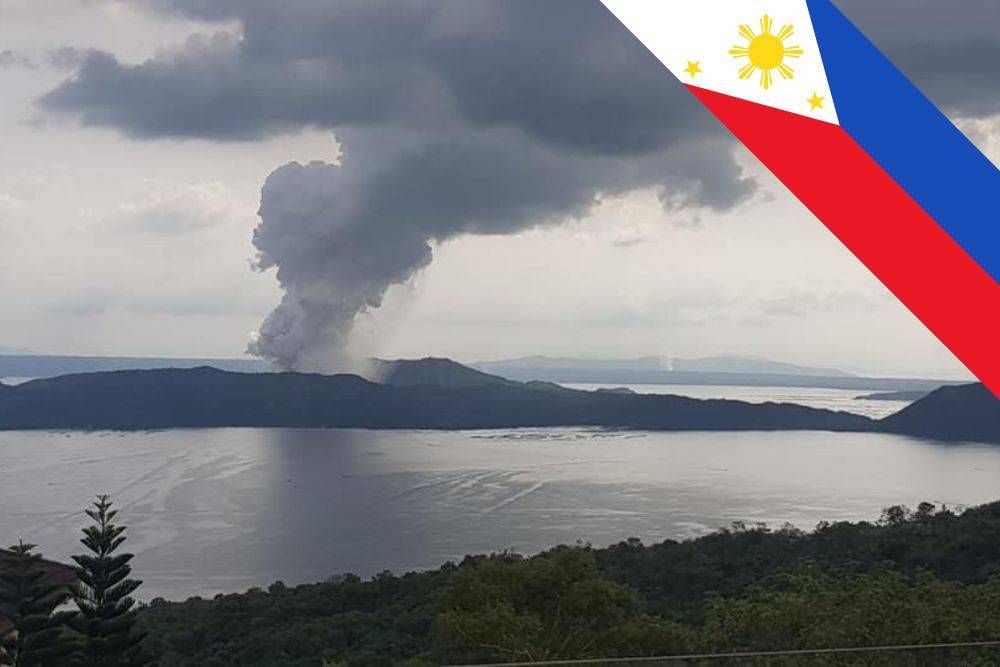Taal Volcano, located in Batangas, Philippines, continues to exhibit significant volcanic activity. During its latest explosive episode, it emitted a substantial amount of sulphur dioxide (SO₂).
The Philippine Institute of Volcanology and Seismology (PHIVOLCS) reported that the volcano released approximately 3,300 metric tonnes of sulphur dioxide into the atmosphere. This recent activity has raised concerns among local authorities and residents, prompting the issuance of safety advisories.
Increased Volcanic Activity and SO₂ Emissions
Due to its unpredictable nature, Taal Volcano, one of the most active volcanoes in the Philippines, has been under close observation. The emission of 3,300 metric tonnes of SO₂ is a significant event, as sulphur dioxide is a major gas released during volcanic eruptions. It can have serious environmental and health impacts, including acid rain and respiratory problems.
PHIVOLCS has been monitoring the volcano’s activity closely. ?They note that the recent increase in SO₂ emissions is accompanied by the production of steam-rich plumes reaching heights of 3,000 metres. These emissions are indicative of ongoing magmatic activity beneath the volcano’s surface. The presence of magma can lead to explosive eruptions, which can pose risks to nearby communities.
Health and Environmental Concerns
The release of large amounts of SO₂ into the atmosphere can have several detrimental effects. For the environment, it can lead to the formation of acid rain, which can damage crops, soil, and water sources. Acid rain can also accelerate the corrosion of buildings and infrastructure.
For humans, exposure to high concentrations of SO₂ can cause respiratory problems, especially for those with pre-existing conditions such as asthma or chronic bronchitis. The gas can irritate the eyes, nose, and throat, and prolonged exposure can lead to more severe health issues.
As a precaution, PHIVOLCS has advised residents living near the volcano to take protective measures. This includes wearing masks and staying indoors during periods of high emissions. They advise residents in the affected area to take the following precautions: limit exposure by avoiding outdoor activities. They can also do this by staying indoors and keeping doors and windows closed to prevent volcanic gas from entering. Additionally, protect yourself by covering your nose, preferably with an N95 facemask. Stay hydrated by drinking plenty of water to ease any throat irritation or tightness. People with respiratory conditions and pregnant women are encouraged to monitor their health and consult a doctor, especially if they experience severe symptoms.
Safety Measures and Community Response
Local authorities have been on high alert in response to the increased volcanic activity. They have been continuously disseminating information and safety guidelines to affected communities. PHIVOLCS has maintained an Alert Level 1 status for Taal Volcano, indicating increased unrest and the potential for a more hazardous eruption. The public is strongly advised to avoid Taal Volcano Island, which is a permanent danger zone, as well as the main crater.
Residents in the surrounding areas have also expressed concern over the recent developments. Many recall the major eruption in January 2020, which led to widespread ashfall and forced evacuations. Local governments are now better prepared, with contingency plans and evacuation routes in place. Emergency response teams have been mobilised, and evacuation centres have been identified to accommodate residents in case of an emergency.
Continued Monitoring and Preparedness
PHIVOLCS continues to monitor Taal Volcano’s activity using a range of tools, including seismic sensors, satellite imagery, and ground-based observations. The institute has urged the public to stay informed through official channels and to heed warnings and advisories. The possibility of an explosive eruption cannot be ruled out, and preparedness is key to ensuring the safety of those living in the vicinity.
As Taal Volcano remains active, the focus is on ensuring the safety and well-being of the affected populations. The recent SO₂ emissions highlight the ongoing volcanic activity and the need for vigilance. While the situation is being closely monitored, it serves as a reminder of the dynamic and potentially dangerous nature of the Philippines’ volcanic landscape.
In the face of these challenges, the resilience and preparedness of the local communities and authorities will be crucial. The ongoing efforts to monitor the volcano and implement safety measures underscore the importance of a coordinated response to natural disasters.
Have a pressing question for a doctor? Medical Channel Asia has launched a community forum page where you can get questions answered by a medical specialist. Visit the community forum here.

